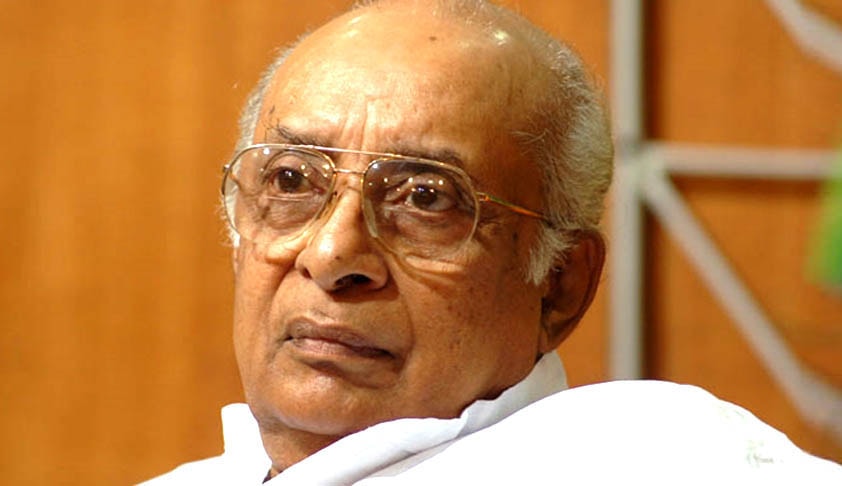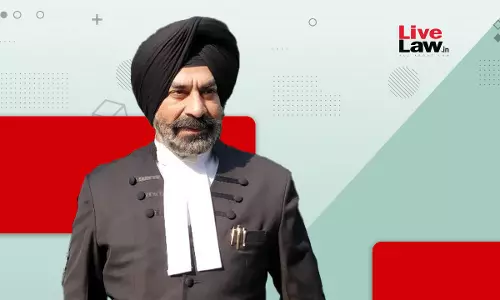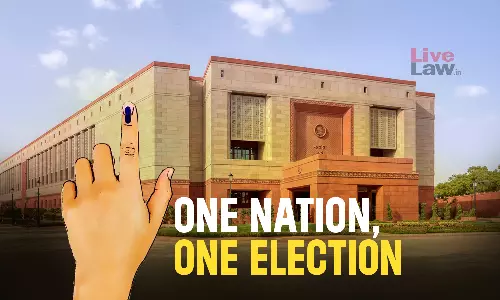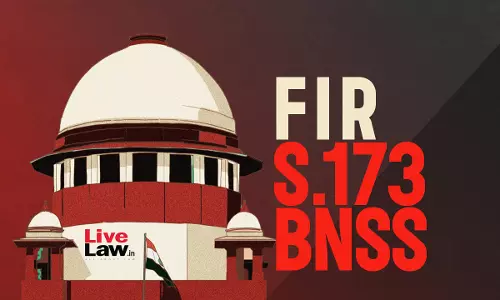#NJAC Judgment reflects a craving of the Judiciary to arrogate to itself the Power of Appointment

This is an unfortunate judgment. Look at the background of the Constitutional amendment. It was felt almost unanimously that the collegium system is studded with flaws like subjectivity, partiality and lack of transparency. Some of the most eligible persons could not get into both levels of the court (High Court and Supreme Court) as they were not inclined to do any lobbying work. In fact,...
This is an unfortunate judgment. Look at the background of the Constitutional amendment. It was felt almost unanimously that the collegium system is studded with flaws like subjectivity, partiality and lack of transparency. Some of the most eligible persons could not get into both levels of the court (High Court and Supreme Court) as they were not inclined to do any lobbying work. In fact, the two jurists, Fali S Nariman and J S Verma, who were principally responsible for evolving the collegium system, stated subsequently that they did not anticipate so many flaws for the system. Nariman went to the extent of saying that he would have been prepared to have lost the case that he won in formulating the collegium system.
In fact, F S Nariman pleaded with Justice M N Venkatachelliah Commission, which was appointed for suggesting reforms for the Constitution that a National Judicial Commission (NJC) should be a part of the recommendations of the committee. Almost all the doyens of the legal fraternity welcomed the proposal made by the Justice M N Venkatachaliah Commission for creating National Judicial Commission in which both the Executive and the civil society should also be involved along with judges.
One should not ignore the fact that the Constitution Amendment was passed by both houses of Parliament with near 100 per cent unanimity and got the approval from 28 state legislatures. It is one of the rarest events in our Constitutional history to have such unanimity by all the members of Parliament who voted. According to me, such a Constitutional provision should not have been struck down merely because the executive is also given a say in the matter of selection of justice. The presence of two eminent citizens in the selection process should have been welcomed by the judges, particularly when they were chosen by a collegium consisting of the Chief Justice of India (CJI), the leader of the House, and the leader of the main Opposition party. The majority decision of the five-judge bench reflects a craving of the judiciary to arrogate to itself the power of appointment. In my view it was not palatable to a Constitutional democracy.
I had been a member of the collegium at the High Court level and at the Supreme Court level. From the past experience, I would welcome the minimal participation of a member from the executive and also the civil society in the selection process to avert unworthy persons from sliding in. The very fact that one of the senior judges of the five-judge bench in the present case advanced very sturdy and valid points for holding that the Amendment was not vitiated by any virus, was enough not to throw the Constitutional provision overboard on the mere assumption that such minimal involvement of executive representative and civil society would vitiate the selection.
Independence of Judiciary, which is highlighted in the majority judgment as impaired by the amendment, should mostly be dependent on the function of the judges during the post-appointment stage, and not in widening the scope of pre-appointment deliberations. Political background of persons to be considered for judgeship should not be treated as disqualification. Such persons have closer association with the people at different levels and they know the pulse of persons suffering from social injustices. In fact, history of our judicial development during the post-Constitution period, shows that the great expansion of Constitutional philosophy was contributed, among others, by judgments rendered by those judges who had background in political activities.
It is to be remembered that the clamour for replacement of collegium system did not come first from politicians; it was from the legal community as instances of faulty selections did not remain sparse, but were on the increase.
The possibility of using veto by two persons in the NJAC seemed to be over-emphasised by the majority judgments of the Supreme Court. We may bear in mind that vetoing is not for appointing, but for preventing the appointment of persons whom the non-judge members consider unworthy. Though judges are better persons to discern the legal acumen of the candidate, I feel that non-judges are better persons to know all the other aspects of a candidate. Is it not advisable to use such sources also to decide on the suitability of the candidate?
There is no conception that judges are infallible. Even in judicial exercise, the scope of fallibility of judges is not in minimal dimension. If judges can be fallible in making the selection of judges, then can anyone say that they be eliminated from the selection process? On the same logic, the possibility of eminent citizens wrongly vetoing is not enough to keep them out.
The concept of NJAC was initially formulated not by the executive but by a committee of judges and jurists (Justice M N Venkitachelliah Committee for Constitutional Reforms). In fact, the impugned amendment was made after further improving the proposal through parliamentary deliberations. For example, when Lok Sabha passed the Amendment Bill, it said that only a unanimous decision by the commission will bind the President of India. When the Bill reached the Upper House, the members pointed out the possibility of occurring repeated statements whenever unanimity could not be achieved. Hence the word unanimous was replaced by ‘majority’ in the final shape of the Bill.
In my view, the five-judge bench of the Supreme Court failed in two aspects: (1) a matter involving such momentous importance supported by the entire Parliament and the entire federal units of the Republic should have been referred to a much larger bench, at least as large a bench as that which formulated the collegium system.
May we remember that even an issue concerning education was considered by a bench of 11 judges of the Supreme Court in TMA Pai case. (2) Every endeavour should have been made to protect the people’s verdict reflected in the Constitution amendment by a process of reading down the doubtful clauses either restricting or expanding its scope through the interpretative process as was done by the Supreme Court in the case dealing with Article 21 (Maneka Gandhi case), Article 356 (S.R Bommai case) Article 15 (Mandal case, in which the theory of Creamy layer was evolved).
Justice KT Thomas is a former Judge of Supreme Court of India. He is the Chairman of LIVELAW Advisory Board. This Article is published with Special permission from Justice Thomas.




